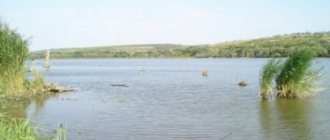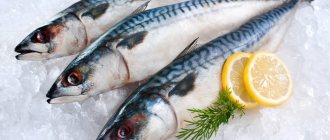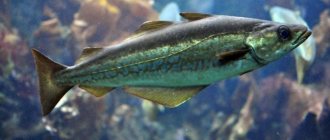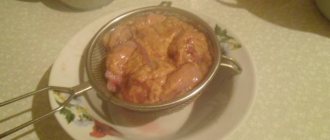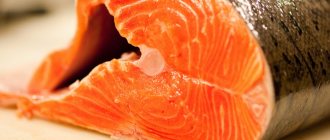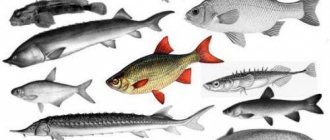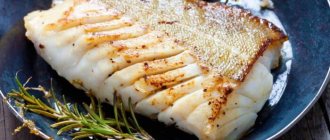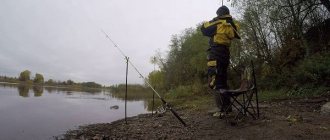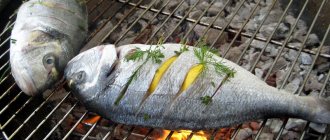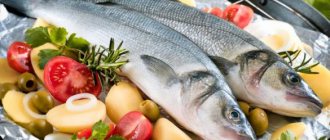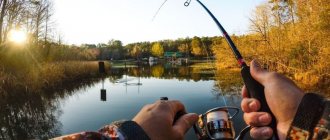General information
As a rule, underwater inhabitants are able to reproduce from the age of one. In general, the spawning of fish of a particular species greatly depends on the geographical location of the reservoir. It is known for certain that those species that live in the southern regions begin to reproduce somewhat earlier than their counterparts from the northern regions.
Fish have many biorhythms that determine their life activity. Spawning is one of the most important of these. Moreover, each type of fish has its own - special. And fish spawning occurs when several circumstances are combined simultaneously - light and temperature, oxygen and food, as well as hydrological factors. If one of them is missing at the moment, then the fish either does not spawn at all or swims to the place where the eggs are laid, and then turns around, and in the most literal sense of the word, and its eggs are absorbed. Resorption is the scientific name for this process.
In addition, it has been proven that even for the same type of fish in different bodies of water, spawning times vary, and this happens due to the difference in time of the combination of all the necessary factors.
What conditions most affect fish spawning?
Most of all, fish spawning depends on water temperature. Each type of fish has its own temperature limits that favorably influence spawning. If the water temperature goes beyond these limits, spawning may not occur at all or it may occur partially. Both the eggs and the young fish that hatch from them are very sensitive to heat and cold. A sudden change in temperature can kill fish eggs. From this we can conclude that most fish spawn during their spawning season, when the water temperature is most conducive to their reproduction.
Reproduction
On average, sexually mature underwater inhabitants of reservoirs reproduce annually. But, unfortunately, commercial fishing and other negative impacts of human activity have caused most species to spawn once or twice, or at most three times in their entire lives.
Egg laying occurs at different times: it depends both on the fish itself and on the water temperature. Moreover, the latter circumstance plays a fundamental role in when the spawning period begins. The reason is that the timing of caviar maturation directly depends on this.
At the same time, and this is surprising, the reproduction of some fish, for example pike, burbot, etc., occurs in fairly cold water. However, this will in no way prevent the normal development of the eggs. It is almost impossible to determine the sex of a representative of a particular species by eye. But when spawning begins, many fish, and especially predators, begin to develop secondary sexual characteristics. For example, some males change their color, their head shape becomes more aggressive, on which sometimes, like on the body, horny growths grow. As a rule, within one flock there are equal numbers of both males and females. But over time, this proportion changes greatly: within almost five years, the balance changes completely.
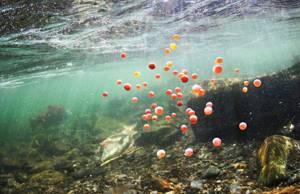
Within fish of the same age, there are almost twice as many females.
Process Features
The entire spawning process occurs gradually.
A female individual, like animals or humans, must acquire a partner. To do this, she secretes special, unique pheromones that signal to her partner that the female is ready to mate.
Some fish change color, which is also a means of attracting a partner.
After the formation of a pair, the male and female build a nest for future offspring. It consists of silt, various blades of grass, twigs and other underwater vegetation. The places where such nests are built are called spawning grounds.
However, not all fish resort to this type of activity. There are species that lay eggs on the ground or on algae. As a rule, unprotected eggs become easy food for predators.
Depending on where they spawn, fish are divided into 5 groups:
- Lithophiles that lay eggs on open ground, clay and stones.
- Phytophiles that spawn on plants and algae
- Psammophiles that spawn in reservoirs with a sandy bottom and lay their eggs on the sand.
- Pellagophiles, which spawn in the middle layers of water, the development of eggs in this case occurs in a floating state.
- Ostracophiles that lay eggs in the subbranchial cavity of bivalve mollusks.
However, it is worth paying attention that one type of fish can belong to several groups at once.
For example, kutum and ide have the ability to lay eggs both on the ground and on algae, as well as other underwater vegetation.
Fertilization

The process of reproduction in fish occurs only through sexual intercourse. To do this, eggs are formed in the female, in the so-called ovaries, and in males, mammary glands are formed, with the presence of sperm in them.
After the female spawns, the male swims up and sprays his seminal fluid onto the surface of the eggs. It seeps through the thin film and thereby gives birth to life inside it. Next, a larva develops from the egg, gradually turning into a fry.
In addition to spawning, some species of fish are capable of giving birth to already formed fry.
For this purpose, males have a gonopodium or the so-called sexual organ of fertilization, with the help of which the male introduces seed into the female’s genitals.
After 3-3.5 weeks, the fry will be fully formed and ready to be born. They will be able to move independently in the water and develop.
How to catch more fish?
I have been active fishing for quite some time and have found many ways to improve the bite. And here are the most effective:
- Bite activator. Attracts fish in cold and warm water with the help of pheromones included in the composition and stimulates its appetite. It’s a pity that Rosprirodnadzor wants to impose a ban on its sale.
- More sensitive gear. Reviews and instructions for other types of gear can be found on the pages of my website.
- Lures using pheromones.
You can get the rest of the secrets of successful fishing for free by reading our other articles on the site.
Please note that the entire fertilization process can take from 1 day to 2 months depending on the type of fish and the method of reproduction.
Favorable time for spawning
As a rule, most fish species spawn with the arrival of spring and so on until mid-summer. For example, dace, bream, roach, perch, beluga, kutum, catfish and many others spawn from March to August, when the water in the reservoir warms up and is favorable for fertilization.
But there are other types of fish that prefer to spawn in the autumn-winter period, these include: salmon, burbot, whitefish and others. For them, the favorable time for mating is from mid-September to early January.
However, in both the first and second cases, the period when the fry hatches is confined to the spring and summer, since it is at this time that the water contains an increased food supply for the young in the form of plankton and benthos.
Migrations

It is so established by nature that some species of fish, such as salmon, sockeye salmon and others, migrate to spawning grounds. It happens that they swim hundreds of kilometers through rifts and waterfalls to end up at spawning grounds.
There are also sedentary fish that live and reproduce in one place. These are mainly marine fauna.
Migratory fish living in rivers move to the sea to spawn. It also happens, on the contrary, that fish living in the sea move into the river. Such migrations in science are called cathodromic in the first case and anodromous in the second.
Nowadays, people help fish by erecting special underwater structures that facilitate migration processes without harming them.
Temperature
Water temperature is one of the main factors of reproduction in fish.
In central Russia it ranges from 5 to 15 degrees. In these conditions, fish such as pike perch, perch, podust, asp and ide spawn.
Other species, such as roach, bream, rudd, crucian carp, sabrefish and podust, begin their spawning when the water temperature warms up from 10 to 20 degrees.
For catfish and carp, a temperature regime of at least 18-23 degrees is preferable.
For fish that spawn in autumn and winter, the water temperature should be from 4 to 6 degrees.
At present, the situation is such that the biological clock is often disoriented, this is due to various types of natural disasters. Therefore, the usual spawning time of many fish has significantly deviated from the usual rhythm.
Laying eggs
The fisherman must know how and when spawning begins for each species. This will not only affect the percentage of successful catches, but will also help him avoid fines. After all, as you know, fishing is prohibited during this period.
Usually fish spawning occurs after a long feeding period. This is the golden time for the fisherman, when the prey begins to actively bite, and equally well on various baits and baits. For many species, food of animal origin is especially popular during the pre-spawning period, allowing them to obtain much larger amounts of substances useful for life and future reproduction.
This period before spawning, unfortunately for fishermen, does not last long: from seven to fourteen days. At the same time, predators fatten a little longer than other types of fish. For example, in cyprinids, spawning occurs so quickly that you can simply not notice it.
Long haul
Before going to spawn, the fish begin to flock together in schools. Then their path goes to the upper reaches of the rivers.
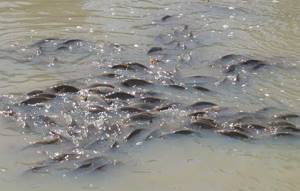
Some species swim into small rivers or channels, while others simply choose small and well-warmed places where they lay eggs. During this period, it is very important that the water level is maintained, and especially in reservoirs in which spawning also takes place in shallow areas. Therefore, a sharp change in depth can cause the death of eggs, thereby causing an irreparable loss to the fish resource. During the entire journey to spawning, the fish feed intensively, preparing for their forced “fast”. For this reason, they swim for a long time and slowly: sometimes the journey to the breeding site for some species takes several days.
Egg development process
Having arrived at the right place, the females lay eggs. And the males simply release seminal fluid into the water. Then the process is left to chance.
After some time, small creatures begin to hatch from the eggs, very vaguely resembling fish. For several days they literally hover motionless, as if gradually coming to their senses, and then begin to actively feed on various microorganisms. Typically, this process takes about a month. Throughout this period, the body of the larvae is gradually covered with scales, and full-fledged fins appear. And after just a week, the four tadpoles that hatched from the eggs can confidently be called fry.
Spawning time
The most important aspect for anglers during spawning is timing.
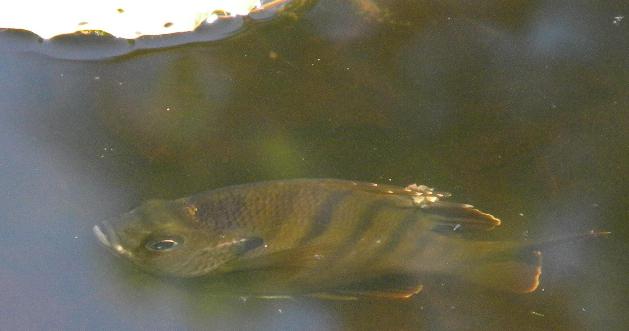
This is explained by the fact that different species have different timing of egg laying. Fish in our reservoirs are divided into spring and summer according to spawning - these are catfish and roach, bream and pike, pike perch with sturgeon, beluga, grayling, etc., which spawn from March to August. The second group is the one that reproduces in autumn or winter. Among them are whitefish, salmon, whitefish and burbot, which lay eggs from September to January. But both have one thing in common: the larvae necessarily emerge from the eggs in the spring and summer, when food plankton, periphyton and benthos—the starting food for the young—are intensively developing around them.
The difference in reproduction among different species of fish is not only in the time of year, but also in the varying degrees of development of the sexual product. Some underwater inhabitants spawn their eggs as soon as they swim into the river: these are spring races. Others remain there for a fairly long period - almost a year, fattening up, and only then spawn: these are winter species.
How does fish spawn?
Each species has spawning characteristics. The main steps are as follows:
- At the beginning of the period, females release pheromones that attract males. Some varieties change their color at this time.
- After the pair is formed, a spawning area is established. This is a nest for future offspring. The building materials are underwater vegetation, twigs, and silt. Some representatives spawn on algae, soil, stones, in the middle layers of water or in the hypobranchial cavity of mollusks.
- The eggs are formed in the female's ovaries. After laying it, the male sprays seminal fluid. It seeps through the thin film of eggs, due to which larvae are subsequently formed from them, which turn into fry.
- The emerging larvae are not able to find food, feeding on the contents of the yolk sac on the abdomen. After some time, the bubble resolves, and the larva turns into a fry, which begins to feed independently.
Some representatives move from seas to rivers or vice versa for reproduction. The spawning period is the most important annual biorhythm.
When does which fish spawn?
Burbot, for example, lays eggs from January to mid-February. Then he doesn’t eat at all for seven to fifteen days, as if restoring his strength, but then he pounces on almost any small fish that gets in his way. Pike in the southern regions spawn at the end of February, while in the north - at the beginning of March. The pike perch lays eggs immediately after this toothy predator.
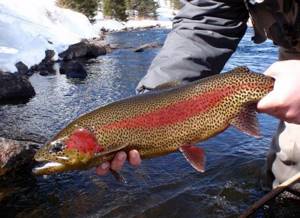
Typically, its spawning time occurs during the ice melting, when the water warms up to ten degrees Celsius. As a rule, in southern reservoirs it is April, and in northern reservoirs it is May. Its breeding time is quite extended, and in some regions, and especially in the southern regions, pike perch goes to spawn in March, and in northern reservoirs - only after the water has subsided, which occurs in late April or early May.
Around the same period, the chub lays eggs. True, it shows its pre-spawning activity much earlier, so fishing for this fish can be successful even at the very end of February.
Reproduction of bream in the southern regions begins in early March, and from the end of January this fish begins to fatten. And already a month later, already full of strength for laying eggs, it spawns with might and main. Moreover, only large individuals begin to discard first, and only then the small ones. In this case, the average temperature in the reservoir should be at least ten degrees. Another popular prey among our fishermen - roach - goes to spawn under the same conditions. Moreover, weather conditions are also important for her. In early spring, roaches lay eggs only in early April, and during a long winter, not earlier than March. As a rule, the geographical location of a particular body of water also plays an important role in this.
Catfish go to spawn quite late: its spawning time practically coincides with the reproduction of crucian carp or crucian carp. In this case, the water temperature should be at least fourteen degrees. Usually this happens only in the middle or at the end of May, so this mustachioed underwater inhabitant spawns one of the last of the entire fish fraternity living in Russian waters.
All about spawning
- VK
It is advisable for any fishing enthusiast to have information about the timing and characteristics of the spawning of the fish that he prefers to catch, and not only in order to avoid paying fines to fisheries protection. Knowing the timing of spawning, it is possible to determine the time of pre-spawning and especially post-spawning fish feeding. Fish have many different biorhythms that determine their life activity, including spawning - the most important of the annual biorhythms. Content:
- HOW SPAWNING OCCURS
- CAVIAR AS A PRODUCT
- FERTILIZATION
- SPAWNING TIME
- SPAWNING OF FISH IN OUR RESERVOIRS
Moreover, each species of fish has its own and occurs when several factors are combined at once: temperature, oxygen, light, food, hydrological and in the presence of a partner). If these factors do not appear simultaneously, then the fish either do not go to spawn, or go to it, and then turn around in the literal and figurative sense, and the eggs are absorbed (in scientific terms, their resorption occurs). In addition, representatives of even the same species in different reservoirs have different timing of spawning; this is again due to the difference in the time of manifestation of spawning factors. On average, mature fish in our waters reproduce every year. But, unfortunately, fishing and other negative human impacts have led to the fact that most fish spawn once, maximum two or three times in their lives. The situation is a little better for fish with a long life expectancy - pike, whitefish, sturgeon, taimen, muksun and others. It is interesting that old fish become completely indifferent to spawning, since the functions of their gonads fade away
HOW SPAWNING OCCURS
Not only people, mammals and birds, but also fish attract partners by releasing special chemicals - pheromones, and also signal their readiness for spawning with certain poses, specific body movements, special mating coloration, nest construction, etc.
In different fish, spawning occurs in different ways. It can be one-time, that is, fish of the same species spawn all their eggs at once, sometimes this happens in a few minutes, sometimes in hours, sometimes in days. These include perch, dace, roach, pike, vendace, whitefish, sturgeon and others. But most fish spawn reproductive products in portions, with time intervals from several days to three to four weeks - these are crucian carp, tench, verkhovka, ruffe, spined loach, Siberian char, herring, sabrefish, barbel, shemaya and others. It is interesting that even fish of the same species, finding themselves in different geographical and climatic conditions, can change from one-time spawning to portioned spawning and vice versa. A classic example is bream, which spawns in portions in warmer areas, and simultaneously in northern areas. The catfish behaves the same way.
Some scientists explain the portioned nature of spawning by certain phases of the Moon, arguing that fish wait for the desired phase during the lunar month, during which spawning occurs. If spawning is extended over time, this does not mean that during this period the fish do not feed (that is, do not bite), since usually fish do not spawn all at once, but in certain age groups (scientists call this a “spawning flock”). And fish of other ages feed and bite at this time.
CAVIAR AS A PRODUCT
Fish caviar, from a human point of view, is a food substance rich in nitrogenous components and fat. For example, carp caviar contains (in%): water - 64.08, vitel - 14.08, shells - 14.53, margarine and elain - 2.57, cholesterol - 0.27, lecithin - 3.04, cerebrine - 0.20, alcohol extract - 0.39, coloring matter - 0.03, salts (potassium chloride, sodium and ammonium, potassium phosphate, lime and magnesia, potassium sulfate, traces of iron) - 0.82.
Caviar is consumed mostly in the form of snacks to stimulate the appetite, for which almost exclusively granular and pressed caviar is used - the most expensive varieties. “Black” caviar of sturgeon fish is mined most of all in the spring, when sturgeon, beluga, stellate sturgeon, and sterlet from the Caspian and Azov seas go to the rivers to spawn, and also in the fall, when the fish return to the rivers to rest. Scientists have found that the amount of caviar in fish reaches 1/6-1/9 of its weight. The best caviar is considered to be beluga, as it is the largest-grained, and this caviar is not mixed with anything, while other varieties (sturgeon, stellate sturgeon and thorn) are almost always mixed together. The highest grades of caviar are perfectly absorbed by the human body.
The number of eggs in a perch can reach 300 thousand
FERTILIZATION
From a biological point of view, caviar is like fish eggs, only they are small, round and very rich in yolk. The eggs have two shells with a hole called the micropyle, through which sperm penetrate. If the reservoir is polluted, then fertilization of the eggs does not occur, since the micropyle closes, and the fish in this reservoir gradually disappear. Most fish fertilize their eggs in the water, outside the body. The exception is viviparous fish, in which fertilization occurs inside the body.
Male perch ready to spawn
Most fish are dioecious, although there are also bisexual ones, and it is among fish that cases of repeated sex changes in one individual most often occur. The amount of caviar spawned depends on the age and size of the fish: the larger it is, the more caviar it contains. But there is a general pattern: if the fish takes care of the eggs, then there are few eggs; if the pelagic eggs are not taken care of, then there are much more of them.
SPAWNING TIME
The most important aspect of spawning for anglers is timing, as different fish spawn at different times. The fish of our waters are divided into autumn-summer spawning: catfish, roach, bream, pike, pike perch, vimba (syrt), sturgeon, beluga, thorn, kutum, grayling, which spawn in March - August, and autumn-winter spawning: whitefish, salmon, whitefish, burbot and others that spawn in September - January. But in both groups, the emergence of larvae from eggs is timed specifically for the spring-summer period, because at this time there is an intensive development of food plankton, periphyton and benthos, which are the starting food for the young. Many fish go to spawn in rivers at different times of the year and with varying degrees of development of reproductive products (spawn). Some of them spawn as soon as they come into the river (spring races), while others live there for a whole year, fatten up and only then spawn (winter races). Now many ichthyologists are studying the issue of the existence of spring and winter races among the same populations of sturgeon and salmon, which may give an extra chance for their survival. Indeed, under the influence of negative anthropogenic impacts, other fish are forced to change their usual habitats and spawning areas, since there is a sharp reduction in spawning areas.
Depending on the places where eggs are laid, several groups of fish are distinguished
- Lithophiles are fish that lay eggs on stone, gravel or hard clay soil: salmon, whitefish, sturgeon and some cyprinids.
- Phytophiles lay eggs on plant substrates in stagnant or low-flow water: bream, carp, pike perch, pike, perch, roach, crucian carp, etc.
- Psammophiles breed in rivers and lakes with sandy soils if there are favorable conditions for embryonic respiration. Eggs are laid on plant roots washed away by the current, sometimes on sand. This group includes minnows and some loaches.
- Pelagophiles breed in rivers and lakes and spawn in the water column. Embryonic development occurs in a floating state and under favorable conditions for respiration. These are anadromous herring, sabrefish, grass carp, white and bighead carp, etc.
- Ostracophiles reproduce in rivers, laying eggs in the gill cavity of bivalves, where breathing conditions for developing embryos are not very favorable. These are bitterlings.
Some fish belong to different groups at the same time, for example lithophilous-phytophilic fish. Depending on environmental conditions, such fish (fish, kutum, ide) can lay eggs on rocky soil and vegetation. Knowledge of these ecological groups makes it possible to determine, based on the type of reservoir, a more specific habitat for the fish living in it.
SPARING MIGRATION
The signal for spawning migrations is given by maturing reproductive products, forcing fish to leave their homes. Marine resident fish always live and reproduce in the sea, while freshwater fish live in rivers, lakes and reservoirs. They breed mainly in the same places where they constantly live, or close to them. Migratory fish live in the sea and breed in rivers, along which most of them travel hundreds of kilometers, overcoming strong currents, waterfalls, rapids and other obstacles encountered on their way to spawning sites. Migratory fish are also called those that constantly live in rivers and fresh lakes, and go to the sea to reproduce (eel, etc.). Scientists call spawning migrations from the sea to rivers anadromous, and the reverse migrations catadromous.
Classic anadromous fish are found among salmon and sturgeon. The main representative of catadromous fish is the Atlantic eel. Semi-anadromous fish live mainly in desalinated areas of the sea, and to reproduce they enter rivers without rising as high as anadromous fish. Recently, scientists have been concerned about the coincidence of spawning sites in many groups of fish and the disruption of the dynamics of the spawners. The place and time of spawning for most migratory fish has changed; they appear in new bodies of water, surprising fishermen and ichthyologists with their unexpected habitats. Unfortunately, the physiological condition of the breeding fish, fry and eggs has also deteriorated. The survival rate of eggs over the past 30 years has decreased on average by 50-60%. That is why it is necessary to be more careful with spawning fish and comply with the fishing ban periods established by the local fisheries protection authority.
SPAWNING OF FISH IN OUR RESERVOIRS
All fish in our reservoirs spawn differently, this is the key to the biological development of the species as a whole, because in one reservoir fish of several species can spawn simultaneously and they do not interfere with each other at all. They use different depths, water horizons, substrates, time of day, starting food for juveniles and differ in other spawning indicators.
For spawning, pike perch gathers in places where there is no current, at a depth of 0.5 to 4 m, the roots and branches of plants serve as the substrate. Females build round nests up to 60 cm in diameter. They usually spawn at night. The male then guards the nest and eggs and does not allow anyone to approach the nest closer than 1 m. If you accidentally catch a male pike perch at this time, all the eggs will die. Nowadays, ichthyologists install artificial nests in many reservoirs, which pike perch are very fond of.
Note to anglers
Indicators of the temperature at which fish spawning occurs
| Type of fish | Temperature, °C |
| Zander | 7-8 |
| Roach | 8-12 |
| Chekhon | 15-20 |
| Pike | 4-13 |
| Som | 16-28 |
| Asp | 6-10 |
| Bream | 11-23 |
| Perch | 9-12 |
| Rudd | 14-18 |
| crucian carp | 14-19 |
| Carp | 18-20 |
| Ide | 5-13 |
| Podust | 10-12 |
Roach prefers for spawning quiet areas of floodplain reservoirs with standing water, where it forms large schools that spawn vigorously in overgrown water areas. Sunset and sunrise are the best times for its spawning. Before spawning, males are covered with a pearly rash (this is also typical for other cyprinid species), which is why they become rough. Immediately after spawning, this nuptial plumage disappears. During spawning, spawners jump out of the water.
Chekhon can spawn both on shallow riffles of the coastal part of the floodplain and in the river bed itself, which depends on the magnitude of the rise of flood waters. The depths at the spawning grounds do not exceed 1 m. The spawning areas are covered with meadow herbaceous vegetation and sparse shrubs. The shells of the spawned caviar of sabrefish are not sticky, therefore, swelling greatly, the caviar becomes buoyant and is easily carried away from the spawning sites by the current. The embryos develop in the eggs as they drift with the current in the water column. A large amount of caviar indicates that the saber fish does not protect it at all and does not care about the eggs and larvae. The high adaptability of sabrefish to reproduction in different conditions, for example in reservoirs, allows us to hope for the preservation of this fish in the river system after its regulation by dams.
Pike, while still under the ice, begin to approach shallow areas of floodplain reservoirs. In reservoirs with a large volume of water, where the water is less warm, it spawns about a month later. For spawning, this fish chooses areas with a hard bottom, covered with the remains of last year’s vegetation or new grass. The water should be still or with a weak current. The depth at the pike spawning sites does not exceed 1.5 m, and most often it goes to shallower areas for spawning. The spawning group of pikes includes one female and up to ten males. Spawning is very vigorous, clearly visible from the shore. During spawning, the pike does not notice anything and loses caution. Perch, roach, silver bream, and ruffe swim to the pike spawning grounds and begin to actively eat the pike eggs, which has a bad effect on the further abundance of the predator.
Catfish spawn in pairs in coastal areas of reservoirs, among thickets of plants, as well as in floodplains during flood periods, laying eggs on the washed roots of willow, willow, reed and other plants. In reservoirs, it can lay eggs on artificial nests made of old straw roots, exposed for the spawning of other fish. The female lays eggs in shallow areas of a reservoir with standing water or a weak current in a depression dug in the ground. And the males then guard the eggs until the stage of formed fry. After spawning, catfish move to summer camp sites, where they actively feed. This is the time of their main feast, which lasts until mid-summer, and then subsides.
The asp , along with the flood waters, moves to spawn in the same riffles where it usually feeds in the summer. He lays eggs in one go on hard ground or on ground with dense vegetation.
In early spring, bream leaves winter camps and swims to spawning grounds - to the coastal zone with rich vegetation. It lays eggs in floodplains of rivers on flooded meadow vegetation and on washed-out plant roots. The depth of the spawning sites is up to 2.5 m, and there is almost no current. Bream spawn in large groups and are very noisy in the early morning hours. Spawning games are very interesting to watch. Before spawning, bream go out to a selected area of the reservoir, where they swim in circles up to 10 m in diameter, stick their backs out of the water and splash vigorously. Large males “scrub” smaller ones from females.
, perch forms large spawning schools, which, unlike many other fish, consist of individuals of different sizes, with two to three times more males than females. The largest specimens of perch begin spawning, and the smaller ones continue. To spawn, schools of perch go to shallow water areas with last year's vegetation and a hard bottom, where there is almost no current. The female lays all her eggs in one go. The masonry is a hollow tube or ribbon of eggs, glued together by swollen rims into a strip up to 1.5 m long, which is glued to the stems of herbaceous and woody plants. After spawning, the females leave the spawning grounds and move to the depths. The larvae that emerge from the eggs stay in schools for some time in shallow places, near the shores, near spawning grounds, and sometimes become food for other fish.
The rudd is a thicket dweller and lays its eggs on vegetation. It approaches the spawning grounds in small flocks; the spawning process itself occurs calmly, without strong splashes.
Crucian carp spawn in late spring and early summer, gathering in thickets of plants, on which females lay yellowish small eggs. Spawning is usually carried out in three portions; as a result, spawning sometimes lasts for two months. The eggs of a female goldfish can be fertilized by male fish of other species (carp, goldfish and others), but only future females hatch from the eggs.
Carp spawns later than catfish, tench and crucian carp; its spawning period lasts approximately from the end of April to August (in different years, depending on the weather, these indicators may differ). The female spawns eggs on aquatic plants at shallow depths. At the same time, the carp quickly jumps out of the water, splashes and reveals itself in every possible way. Smaller carp begin to spawn, and larger ones continue. Spawning of the entire population lasts about a month. Sometimes not all ripe eggs are swept out during the spawning period, and then even in September you can catch a female with spring eggs. In the southern regions of the country, the spawning time of carp is directly related to the water level.
The ide rushes to the spawning grounds soon after the snow has melted. It spawns simultaneously with pike and perch; the spawning period lasts one to two weeks. The substrate for eggs is roots and bushes of last year's vegetation at a depth of up to 1 m. Usually in the spawning group there are almost twice as many males as females.
Podust spawns on shallow (up to 30-40 cm) riffles with a bottom covered with pebbles and sand and a fast current. During the spawning period, the pods form large flocks, which spawn for several days in the early evening hours, and are most active at night. The eggs are sticky and cling to plants and rocks. It often happens that pods leave dirty reservoirs and move to new neighboring ones with cleaner water. Spawning occurs in one step. In a spawning school, the number of males significantly exceeds the number of females.
It is possible to determine spawning periods much more accurately by knowing the temperature in reservoirs and observing phenological signs (blooming trees, length of daylight hours, stability of air temperature, etc.). Fishery conservation authorities, constantly cooperating with ichthyologists, every year introduce bans on fishing during the spawning period of fish of certain species. Such bans are often formalized as a decree of the government of the N region dated on such and such a number and have the wording: “On strengthening the protection of fish stocks and reservoirs during the spring (autumn) spawning period of fish in such and such a year.” In relation to each more or less large body of water or to all water bodies of any district (region), the State Fisheries Inspectorate provides information on the timing of the fishing ban. Depending on what type of fish is spawning, even in neighboring bodies of water, the periods for prohibiting fishing may vary markedly. As a rule, fishing during such periods is either completely prohibited or allowed only from the shore and with one fishing rod.
Related articles:
Spinning and its characteristics
Western Bug River
Table of the largest rivers in Russia
Classification of Daiwa spinning reels
crucian carp
This fish is most often found in our lakes and rivers. It is part of the largest carp family, living in all geographical areas of the former CIS.
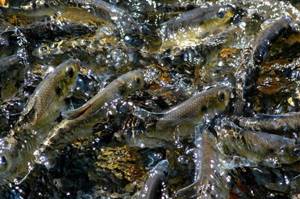
Crucian carp can be caught in every body of water, even the most unpredictable, from dammed swamps and quarries to large rivers or lakes. The spawning of crucian carp takes place during the last days of April and lasts until the end of spring. The timing depends primarily on the temperature conditions in a given area: for example, with a long and cold spring, the laying of eggs can last until halfway through the first of June. By this time, when the main species of fish are already going on a post-spawning meal, carp and crucian carp cannot be caught. At the same time, tench also go to breed with them.
Spawning of crucian carp begins only when the water in reservoirs reaches fifteen or sixteen degrees. This suggests that spawning in this fish is extended over time: first, individuals living in small ponds and lakes begin spawning, and later it is the turn of the inhabitants of large rivers, where the water is noticeably colder.
Fish reproduction. Spawning
Great attention has always been paid to the reproduction of animals, including fish, in connection with the tasks of their breeding and the influence of various environmental factors on various parts of the reproductive process. Currently, significant factual material has been accumulated on the characteristics of gametogenesis in most fish species, on the time of onset of sexual maturity and the life expectancy of individuals in various water bodies. Information about the type and nature of spawning and the ecology of reproduction of freshwater and marine fish species is constantly being updated.
Certain difficulties arise when it is necessary to assess the degree of tolerance to the actions of various factors - natural and anthropogenic, not only for all stages and periods of fish ontogenesis, but even for gametogenesis, sexual cyclicity and spawning of fish.
When studying the process of embryogenesis, a complex relationship arises between the spawning process and a complex of environmental factors that determine the conditions for the reproduction of fish species, for example, roach, pike perch, carp and bream.
In addition to accumulating information about the time of maturation of reproductive products and the course of embryonic development in nature in individuals of different populations of the same species, information about embryogenesis can be obtained under experimental conditions of keeping fish. However, under experimental conditions it is not always possible to obtain results on the reproduction of aquatic organisms. For successful experimental studies, it is necessary to use existing information about the development regime of individuals of a particular species in a variety of natural reservoirs.
All types of fish can be divided into poly- and monocyclic. Monocyclic fish die soon after the first spawning, while polycyclic fish spawn from the age of puberty until the end of their lives. It is also possible to distinguish medium- and long-cycle fish; this division is carried out on the basis of the extension of puberty of one generation over time.
Sexual maturity in fish (the time of first spawning) occurs at different ages: early (2-3 years) - these are short-cycle species, at middle age (4-7 years) - medium-maturing species and at late age (8-15 years) - this long-cycle fish species. The rate of sexual maturation varies among individuals in different types of populations, even within the same species.
To clarify the time of fish reproduction, determine the duration of the spawning period, determine the number of spawned portions of eggs, compare the age of females who came for the first time to spawn (recruitment) and those spawning again (remainder), and the rhythm of reproduction of individuals of different ecological groups and different types of populations, analysis of resorption processes in fish ovaries.
Ecological and morphological studies of resorption processes in fish ovaries have shown that resorption can occur as a natural physiological process at different periods of the life of females or as a pathological process associated with unfavorable living conditions for producers.
How the natural physiological process occurs:
resorption of part of the oocytes of protoplasmic growth during the formation of one or another individual fertility of females;
resorption of individual unspawned oocytes in various phases of trophoplasmic growth (the so-called “residual” eggs) - the transition of the gonads to their original state before the start of a new sexual cycle (in fish species with one-time spawning) or the development and spawning of the next portion of eggs in fish species with batch spawning ;
resorption of empty follicles after the ovulation process is the transition of the gonads to their original state before the start of a new sexual cycle and the release of the next portion of eggs in fish species with asynchronous oocyte growth and batch spawning.
Mass resorption of oocytes in the final phases of trophoplasmic growth indicates unfavorable conditions of reproduction (blocked paths to spawning grounds, lack of spawning substrate, etc.). The rate of resorption processes changes due to changes in the temperature regime of water bodies.
It is necessary to take into account that resorption processes influence the development of germ cells to varying degrees in fish species with synchronous oocyte growth and simultaneous spawning and in fish species with asynchronous oocyte growth and batch spawning. In fish with simultaneous spawning, a slowdown in resorption processes leads to long-term disturbances in the reproductive cycle; in others, the processes of resorption and development of germ cells can occur simultaneously.
One-time and batch spawning. With simultaneous spawning, all eggs ripen at the same time. In fish with batch spawning, the eggs mature and are released in batches over a long period of time. For example, in stickleback the spawning process is measured in several seconds, in roach and perch - several hours, in carp and bream - several days. Cod, which spawn 3-4 portions of eggs during the spawning season, spends 1.5-2.0 months on the spawning ground, cod - 3 months. Anchovy, bleak, Caspian herring, sprat, sprats, rudd, tench, silver bream, shemaya, catfish, etc. are spawned in portions.
Often, one and the same species exhibits simultaneous spawning in one body of water and portioned spawning in another. The Aral bream, for example, is characterized by batch spawning, while in northern reservoirs it spawns eggs at once. Portioned spawning is an adaptation of the species to the effects of unfavorable environmental factors and contributes to increased fertility, a greater likelihood of survival of eggs and larvae, and better nutrition of the young due to the uniform use of the food supply.
Due to changes in the living conditions of producers, for example, with changes in the temperature regime in water bodies, the time of intensive accumulation of nutrients in oocytes can change significantly and, thus, in some species of fish, one type of development of germ cells passes into another during the year. In water bodies of mid-latitudes, the first type of seasonal progression of the development of germ cells is observed in pike perch, bream, and tench; in the water bodies of the south, in the same fish species, the second type of gametogenesis is noted in the development of germ cells. In some fish species (roach, carp and some others), no changes were observed in the seasonal course of development of germ cells in water bodies of different latitudes.
The type of spawning of gametes in males is always portioned. Among freshwater fish species, four functional types of testes are identified according to the method of seminal fluid formation:
only in the vas deferens, which is typical for fish with extended spawning - ruff, carp, shemaya, bream, chub, etc.;
in addition to the vas deferens in the seminiferous tubules due to apocrine or holocrine secretion of follicular epithelial cells - perch, burbot, Volga herring;
in the seminiferous tubules and vas deferens due to the secretion of lipids without destruction of epithelial cells - pike, salmon, sturgeon;
in addition to the vas deferens in the seminiferous tubules due to exudative processes - pike perch.
The main types of gametogenesis during the annually repeated sexual cycle can be presented as follows:
intensive accumulation of nutrients is completed by winter (individuals overwinter with mature germ cells);
intensive accumulation of nutrients occurs shortly before the spring-summer reproduction of individuals (females overwinter with immature germ cells);
intensive accumulation of nutrients occurs for a short time shortly before the autumn reproduction of individuals (females overwinter with the ovaries in the post-spawning stage of gonad maturity).
Questions for self-control
1. What are the general rules for studying the development of juvenile fish?
2. What periods of development of juvenile fish do you know?
BIBLIOGRAPHY
Main
1. Kalaida, M.L. General histology and embryology of fish / M.L. Kalaida, M.V. Nigmetzyanova, S.D. Borisova // - Prospect of Science. Saint Petersburg. - 2011. - 142 p.
2. Kozlov, N.A. General histology / N.A. Kozlov // - St. Petersburg - Moscow - Krasnodar. "Doe." — 2004
3. Konstantinov, V.M. Comparative anatomy of vertebrates / V.M. Konstantinov, S.P. Shatalova // Publishing house: “Academy”, Moscow. 2005. 304 p.
4. Pavlov, D.A. Morphological variability in the early ontogenesis of teleost fishes / D.A. Pavlov // M.: GEOS, 2007. 262 p.
Additional
1. Afanasyev, Yu.I. Histology / Yu.I. Afanasyev [etc.] // - M.. “Medicine”. 2001
2. Bykov, V.L. Cytology and general histology / V.L. Bykov // - St. Petersburg: “Sotis”. 2000
3. Aleksandrovskaya, O.V. Cytology, histology, embryology / O.V. Alexandrovskaya [and others] // - M. 1987
Perch
Females of this family reach sexual maturity only in the third or fourth year of life, while males sometimes reach sexual maturity at the age of two, with a length of about ten centimeters.
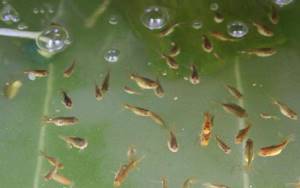
In central Russia, perch spawning begins when the water recedes. This is due to the fact that the water temperature must reach the desired value. The time of laying eggs directly depends on the region where this fish lives. For example, in the first ten days of April, perch spawns in the reservoirs of the black earth belt, in the second - in the Moscow region, in mid-May - in the Ural reservoirs, etc. Spawning of perch can be quite extended over time. Sometimes this fish can begin to spawn in the southern regions even in March.
How to determine whether fish are ready to reproduce
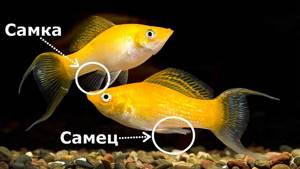
Everything is individual here. Some species, such as gambusia, are ready to give birth 1-2 months after their birth. Others will take 15-30 years to reach sexual maturity.
The timing of ripening is affected by:
- life cycle: the shorter it is, the earlier the maturation, and vice versa;
- species affiliation;
- living conditions and climate.
If a fish has a “nuptial outfit”, it means it is ready to give birth to offspring. This may be a bright color, age spots, skin growth, etc.
You can identify female representatives of the carp and characin families that are ready for spawning by looking at their abdomen - when it is filled with eggs, it becomes round and full, even if the fish is hungry.
Here are a couple more interesting facts:
- Males reach sexual maturity earlier than females.
- In young fish, the first few spawnings are unproductive.
Can't catch during spawning
Fines for violating the fishing ban are sometimes quite large. Many experienced hunters know that there is a spring restriction on fishing, since spawning begins for many species during this period. However, the catch is that the timing of egg laying is different in each region. They are regulated by the Fishing Rules in force in each individual fishery.
During this period, it is strictly forbidden to ride boats, including those without a motor, to approach closer than two hundred meters in vehicles to the coastline, etc. But the most important restriction is fishing during spawning. During the entire breeding season of fish, any amateur fishing is prohibited. However, not everything is so simple. For those who cannot live a single day without fishing, it is allowed to fish from the shore outside the spawning zones, and with specifically installed gear with a clear number of hooks.
Punishment
During the spawning period, a person who fishes even with amateur gear can be considered a poacher. As a result, he faces a fine.
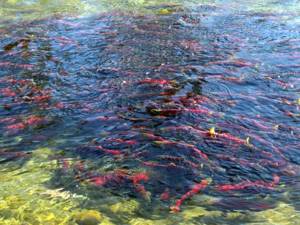
Fishing during spawning is dangerous for fish because during this period it is not able to fight with those who plan to catch it either on a hook or in a net. As a result, this can lead to population problems that often do not fully recover.
If a person who enters a reservoir during the spawning period does not pay the fine, then he faces punishment - up to fifteen days of administrative arrest. To many, such a measure may seem overly strict, but in our country many species of fish are in danger of extinction, and the number of those who are careless about penalties and do not want to part with money is quite large. On average, fines have increased tenfold and reach three hundred thousand rubles. Fishery protection inspectors specify violations. Thus, fishing during the ban on pike, carp or carp can cost two hundred and fifty rubles for each fish caught.
Fishing news in Novosibirsk and NSO
In the “Current Interview” section, Alexander Alekseevich Rostovtsev, director of the West Siberian Research Institute of Aquatic Bioresources and Aquaculture, answered questions from the editors of the newspaper “Rybolov and Okhotnik Navigator”.

— First question: Features of autumn spawning in the Siberian Federal District.
— Most of the fish living in the Siberian Federal District spawn in the spring. These are numerous species of fish of the families: carp (ulcer, dace, roach, bream, crucian carp, carp and others), perch (perch, pike perch), pike (pike), sturgeon (sturgeon, sterlet) and salmon (lenok, taimen, grayling ).
Autumn-spawning fish that live in the Siberian Federal District include fish of the whitefish family (peled, muksun, whitefish, broad whitefish, vendace, pyzhyan, tugun, omul, nelma). In the Ob River within the boundaries of the Novosibirsk Region (NSO) there are nelma, muksun and peled. Muksun and nelma are listed in the NSO Red Book. The fishing of these fish and peled is prohibited for amateur fishermen in the NSO. Peled in the Novosibirsk region, Omsk region and Altai Territory is grown in lakes, where it is caught by users of fishing grounds. In the Tomsk region, peled fishing is permitted for amateur fishermen in the places and periods established by the Fishing Rules.
The main spawning grounds for whitefish in the Ob River are located in the Tyumen and Tomsk regions and the Ural tributaries of the river. In the Novosibirsk region in the Ob River, the spawning grounds of whitefish - nelma, muksun and peled - are present in small quantities. Whitefishes spawn at water temperatures below 4C. Spawning takes place in October-November on sandy, pebble and rocky soils. The eggs are incubated on the spawning grounds all winter until the spring ice breaks up, when the fish larvae hatch. In high-water years, the most favorable conditions for spawning occur. Spawning grounds are washed of silt and debris (branches, leaves, etc.). The oxygen regime becomes optimal. In 2014, a high-water year for the Ob River, there was a massive migration of whitefish to spawning grounds and active spawning within the boundaries of the Tomsk region. In high water for the river. Ob 2014 saw a massive migration of whitefish to spawning grounds and active spawning within the boundaries of the Tomsk region. In high water for the river. The Ob River in 2015 also saw an active spawning run of whitefishes, which suggests active spawning of whitefishes.
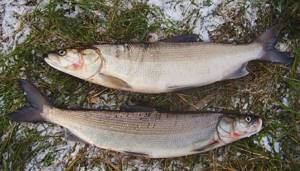
— The next question also applies to spawning. How beneficial are artificial spawning grounds? Is it necessary to increase their number? — The increase in the number of commercial ichthyofauna from among spring-spawning phytophilic fish species in reservoirs and other water bodies usually depends on the conditions of natural reproduction. Thus, in the Novosibirsk Reservoir, at the time of spawning temperatures, thickets of aquatic vegetation in shallow waters serving as a spawning substrate may not be flooded, and with a sudden release of water, the eggs laid by fish die.
Artificial spawning grounds can be an effective means of restoring stocks of native fish species. Their use is especially relevant in large reservoirs - water bodies with an unstable level regime during the spawning period. Artificial spawning grounds are used by local mass species: bream, roach, pike perch, perch and other fish species, which makes it possible to compensate for the damage specifically to those species that live in the reservoir, since artificial reproduction (introduction of juveniles) is usually carried out in relation to a limited number of valuable and especially valuable species fish: whitefish and sturgeon. In the last century, the use of artificial spawning grounds was practiced quite widely. Their use was considered economically justified. The commercial return per 1 m2 of spawning substrate was 5 kg or more of fish products. This norm has been confirmed by many years of observations.
Employees of our institute still conduct annual observations in the spring of the progress of fish spawning, the use of artificial spawning grounds by fish, and the amount of eggs laid on them.
In high-water years, the number of eggs on exposed spawning grounds usually decreases, and in low-water years it increases. Thus, in a high-water year (2014), there were about 15.1 thousand eggs on one nest. In low-water conditions in the spring of 2012, observations showed that bream actively use artificial spawning grounds such as coniferous spruce branches in shallow waters protected from winds and waves in different areas of the reservoir. In terms of the total number of artificial nests used (brooms made of pine branches), the amount of fish eggs incubated on these spawning grounds was determined. It ranged from 34.4 to 64.1 thousand eggs in the nest. The calculations showed that in low-water conditions, the yield of ichthyomass of bream from laid eggs from 1 nest of a spawning ground of the peremet type can be 9.5 kg.
Reducing the negative consequences of an unfavorable level regime for the ichthyofauna of the Novosibirsk reservoir is possible by installing 20-25 thousand spawning nests from coniferous spruce branches in batches of 300-5000 nests. Spawning grounds must be protected, regularly inspected and cleared of silt, debris and dead fish.
It is obvious that in low-water years it is necessary to install artificial spawning grounds. Meanwhile, since the early 2000s, artificial spawning grounds have been installed in small quantities in a limited area and do not have a significant impact on the replenishment of fish stocks.
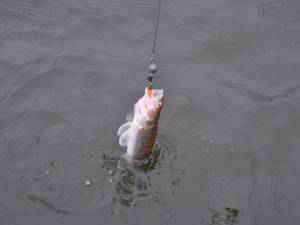
— The third question was of interest to all NSO fishermen: Why are the sizes of fish for catching in the Novosibirsk Reservoir and the Ob River different? What is this connected with? — In order to preserve the population of fish and other aquatic biological resources and their rational exploitation, Fishery Rules are developed and applied.
In water bodies where the fishing pressure is small, restrictions on the catch of commercial fish species are usually represented only by catch quotas, fishing periods and fishing gear. For example, on the Ob River within the boundaries of the NSO, where industrial fishing is poorly developed, only these restrictions have been adopted.
The Novosibirsk Reservoir is subject to intensive industrial and recreational fishing, which can lead to biological overfishing (undermining the reproduction of the fish population) if preventive measures are not taken. Therefore, in the Fisherman’s Rules for the West Siberian Fishery Basin in the Novosibirsk Reservoir, when carrying out both industrial and recreational fishing, “it is prohibited to carry out production (catch), acceptance, processing, transshipment, transportation, storage and unloading of aquatic biological resources that have fresh length is less than 25 cm for bream and 33 cm for pike perch. According to our research, bream and pike perch in the Novosibirsk Reservoir become sexually mature at a body length of 25 cm and 33 cm, respectively. Obviously, this fishing measure allows each individual to have the opportunity to spawn at least once. - Based on the above about size, this begs the question, have these size restrictions improved the number of fish stocks? According to research from our institute, the number of juvenile pike perch in the Novosibirsk reservoir has increased in recent years. This was facilitated by both fishing length restrictions and the ban on net fishing. The increase in the number of pike perch spawners participating in spawning for several years contributed to an increase in the replenishment of its herd. It is no secret that in recent years, in the winter period, in the catches of amateur fishermen, juvenile pike perch measuring 22-30 cm is almost the main prey, but larger pike perch have also begun to be caught. The commercial measure for bream, the main commercial species in the reservoir, serves as a guarantee of stable catches for the Novosibirsk (Ordynsky) and Kamensky (Kamen-on-Obi) fish factories. Bream is constantly present on store shelves not only in Novosibirsk and Barnaul, but also in almost all settlements of the Siberian Federal District.
It is obvious that compliance with the Fishery Rules contributes to the sustainable fishing of the main commercial fish species. — The last question is about the state of the ichthyofauna in the Upper Ob basin today. — The state of fish stocks in our region is currently satisfactory and close to the long-term average. Catches of the main commercial fish species are expected to be stable and close to the long-term average. At the same time, in the lakes of the NSO, including the lake. Chany, the number of pike perch, ide and roach has increased significantly (up to 25%), which suggests an increase in catches of these fish. It should be noted that the high water conditions of 2014-2015 had a positive effect on the conditions of fish reproduction in the region’s reservoirs. There is a significant number of juveniles (fry) of fish in the coastal zone of lakes and rivers. Many Siberian scientists (P.L. Pirozhnikov, 1929; P.V. Tyurin, 1934; G.D. Dulkeit et al., 1935; B.G. Ioganzen and A.N. Petkevich, 1954) and other authors consistently linked cyclical fluctuations in fish catches with fluctuations in water levels in the lakes of Baraby. With the rise in water levels in the lakes and, as a result of improved conditions for reproduction and feeding, the commercial number (catch) of fish began to increase. And, conversely, in low-water years, the number of fish decreases noticeably.
It is known that most fish species enter fishing at 2-3 years of age, i.e. in 2-3 years, the large generation of juveniles of 2014-2015 will grow and reach commercial (marketable) size. Thus, a decline in fish stocks in the region’s water bodies is not expected in the near future.
Olga Chernavina
